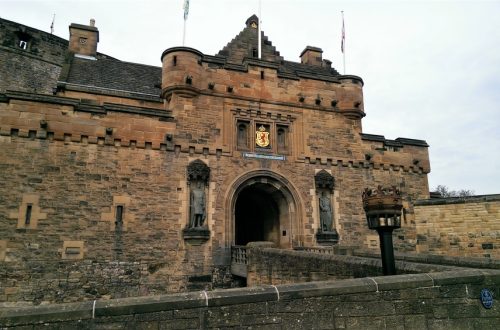When I was in London at the end of August, one of my friends suggested we visit Dennis Severs’s House and the Barbican estate, and having never been to either, I readily agreed.
We started our day at Liverpool Street station, where we popped into Eataly London, just outside the station for a cup of tea and cake, before making our way along Bishopsgate to Dennis Severs’s House on Fore Street.
Dennis Severs’s House
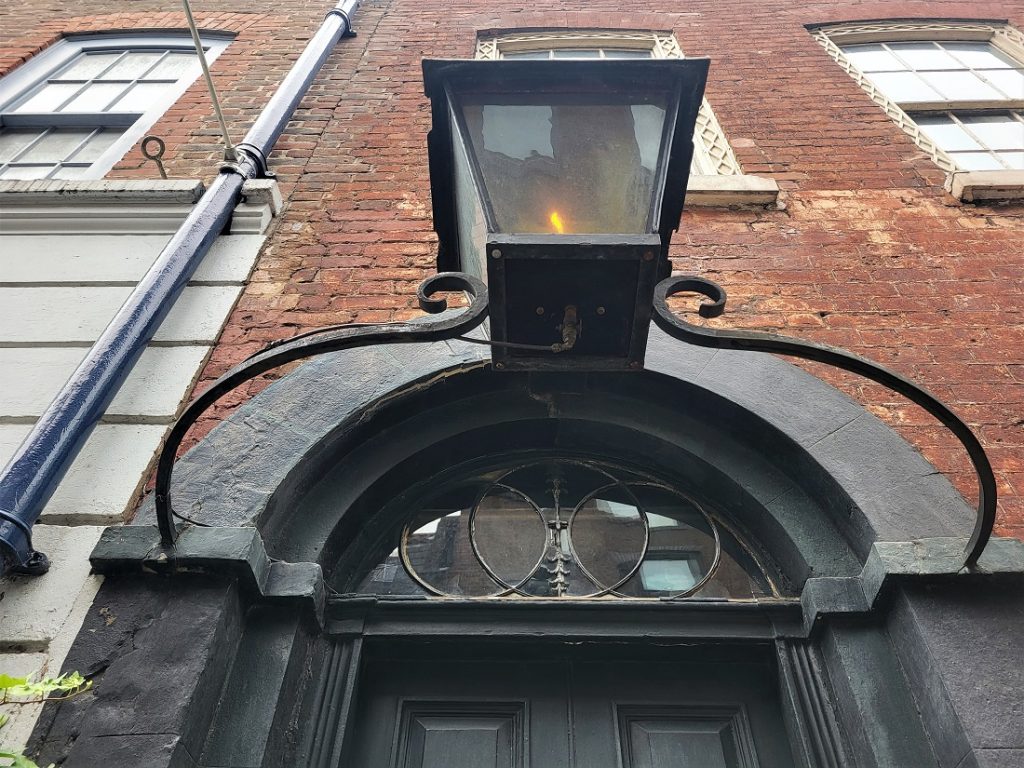
London is full of weird, wacky and wonderful places, but Dennis Severs’s House has to be one of the most peculiar.
For this unassuming Georgian town house in Spitalfields has been turned into an artistic and theatrical ode to a fictional Huguenot family.
In 1979, Dennis Severs, a Californian artist, bought the rundown house from the Spitalfields Trust and turned 10 of its rooms into a museum-like space, furnished and decorated as though the aforementioned Huguenot family had just left.
Severs lived in the house for 20 years with his friend, the ceramicist Simon Perret, and used to give tours around it until his death in 1999.
Just before he died, Severs sold the house back to the Spitalfields Trust to preserve it and to this day, it’s still open to visitors.
We were greeted at the entrance by a friendly volunteer, who explained a bit about the house and let us know that photography and speaking weren’t allowed inside.
We ventured inside and were shown where to go by a series of volunteers stationed throughout the house (there’s a set route visitors have to follow).
The atmospheric house is like something out of the 18th or 19th centuries. The rooms are lit by candlelight and aside from a really old computer hidden behind a partition in one of the rooms, there isn’t a modern or electrical device to be seen.
We walked around in silence, quietly taking in all the many details, and there are many – the attention to detail is astonishing.
The rooms are filled with curious objects and features. It’s a magnificent feat of imagination and unlike anywhere I’ve ever been.
I was surprised by how fastidiously realistic the decor was. In the attic room, the plaster was falling off the ceiling and the room smelt of damp (my friends were convinced both were real).
What blew my mind the most was that one of Severs’s friends still lives there. I couldn’t imagine living in such a house. It’s an extraordinary work of art, but it didn’t feel like a home.
Some of the rooms were quite cramped, and at times, it was difficult to move around if we bumped into a group that lacked awareness and was going at a slower pace than us.
The stairs were also quite steep and someone from another group was struggling to get up and down them.
My friends and I left the house full of questions, as we grappled with what we’d just experienced.
I thought Sir John Soane’s Museum in Holborn was bonkers, but Soanes’s eccentricity had nothing on Severs’s.
It’s one of those intriguing, unique corners of London that needs to be seen to believed and is well worth a visit. Marvellous, but utterly bonkers.
The Breakfast Club, Spitalfields
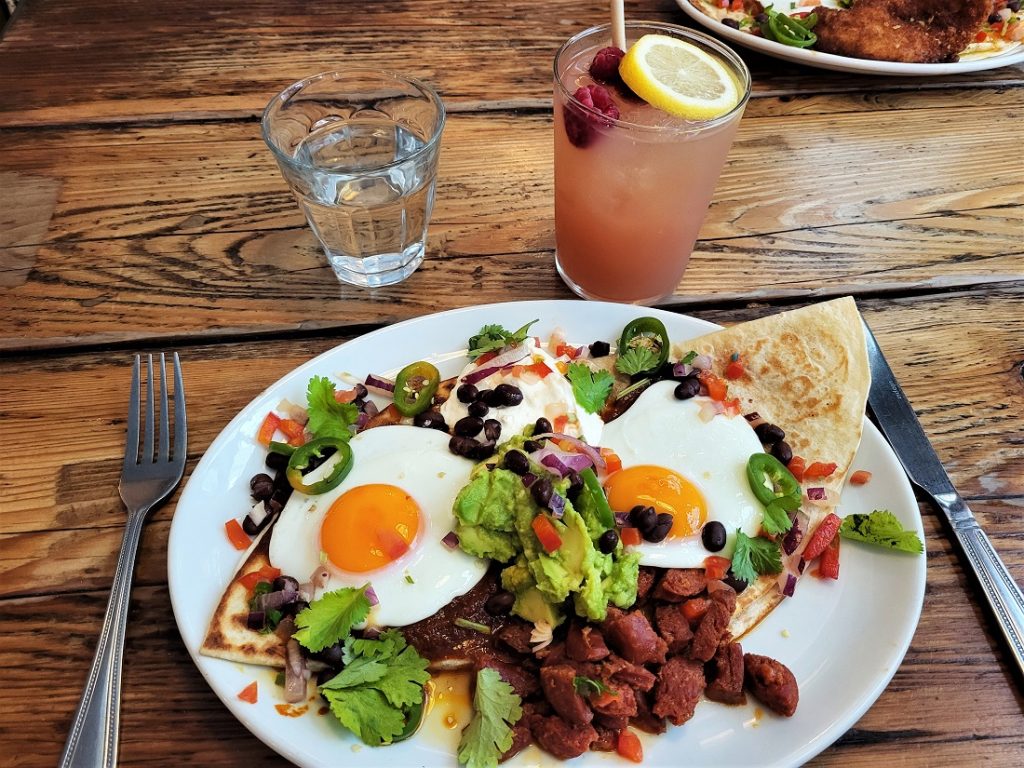
After our visit to Dennis Severs’s House, we made our way back down Bishopsgate to one of our old Spitalfields haunts, The Breakfast Club, for lunch.
The quirky diner-café lies along a side street off Bishopsgate and serves classic brunch-style fare – think pancakes, avocado on toast, club sandwiches and milkshakes.
There’s also a secret bar, The Mayor of Scaredycat, which you enter via the fridge and serves excellent cocktails.
We had to queue for a short while before we were shown to a table, and once seated, I ordered huevos rancheros with chorizo.
It was tasty and fresh, and really hit the spot, but I struggled to eat it all because the portion sizes are huge.
The café is fun and has a relaxed vibe, the food’s good and the service is friendly. It’s a great choice if you’re looking for a bite to eat in the Spitalfields area.
The Barbican estate
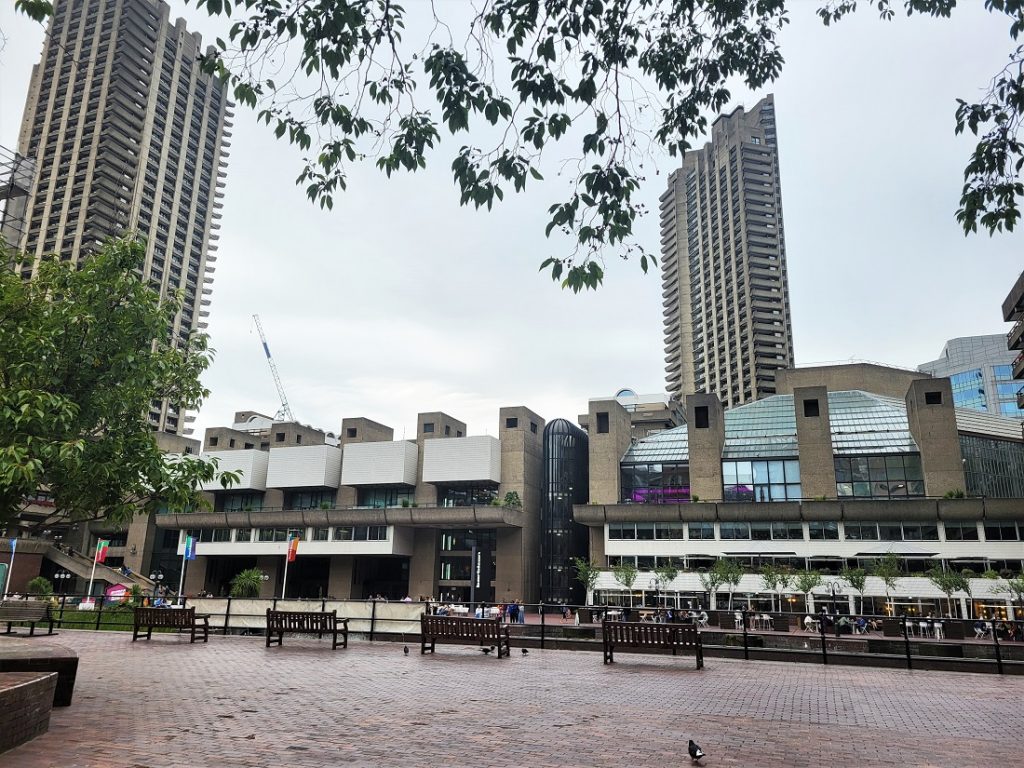
Despite having lived in London for seven years, I’d somehow, inexplicably, never been to the Barbican.
So when my friends suggested we go there after lunch, I was more than happy to check it out.
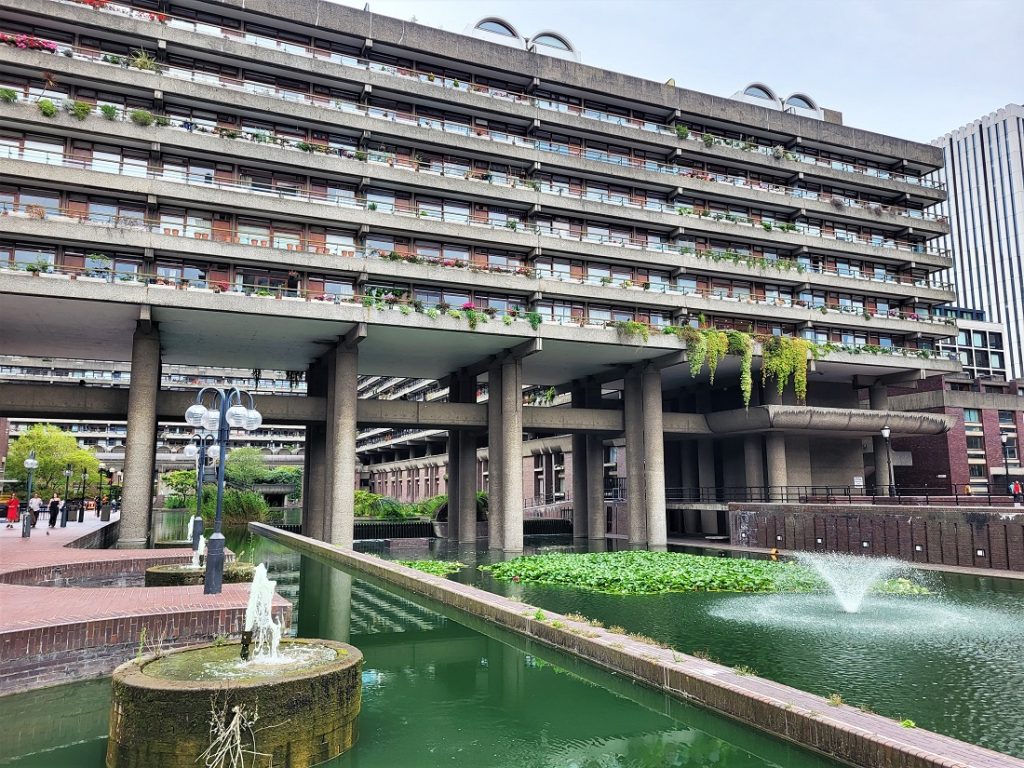
The Barbican estate is a curious place. The enormous Brutalist complex opened in 1982 on a patch of land that had been almost obliterated during the Blitz.
The estate is home to some 4,000 people, as well as an arts centre that boasts two art galleries, three cinemas, a theatre, a hall that houses the London Symphony Orchestra, five conference halls and two exhibition spaces.
There’s also a glass-roofed conservatory that features some 1,800 tropical plants and fish.
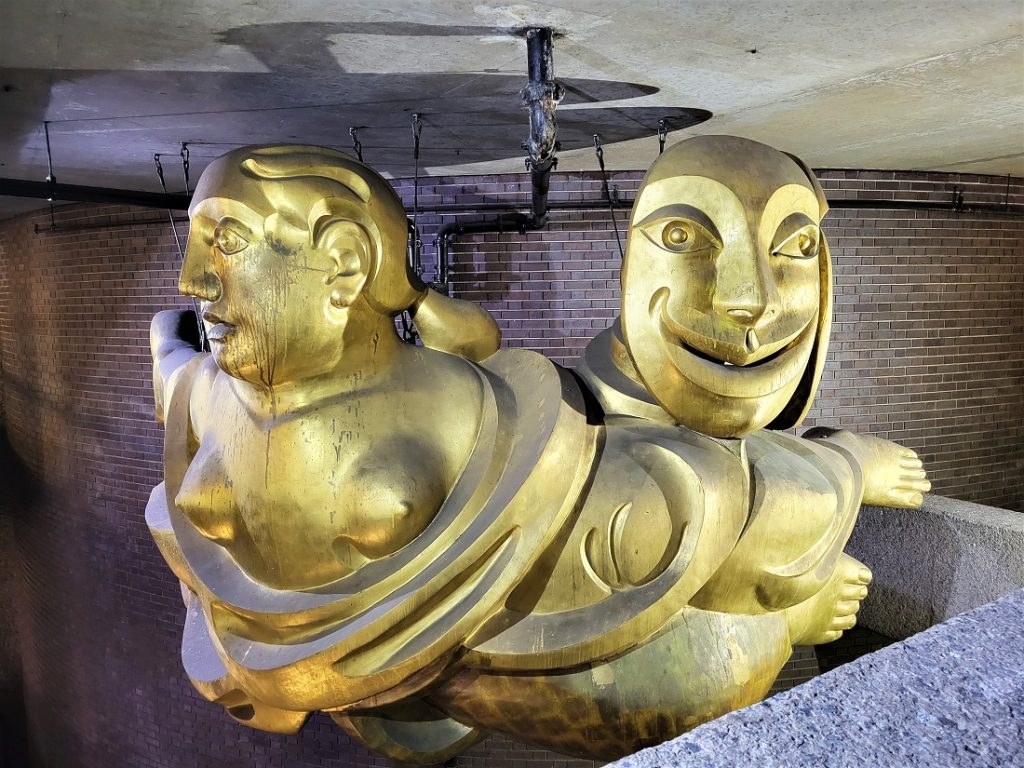
We wandered around the complex, admiring its many features, but weren’t able to go inside the art galleries or the conservatory because they were either closed or fully booked.
I was a little agog at the sight before me – it’s like its own little world in the middle of London – but also incredulous that it had completely passed me by in all the years I spent in the capital.
I’m not sure how I managed to go seven years without ever having visited.
It’s a surreal, bizarre place – beautiful, but ugly in equal measure – and I couldn’t help but wonder what it would be like to live there.
It has a very dystopian feel to it thanks to its Brutalist concrete architecture, but it’s also surprisingly charming.
It’s an intriguing and captivating place and one I’m sure I’ll return to in the years to come.
St Giles-without-Cripplegate Church
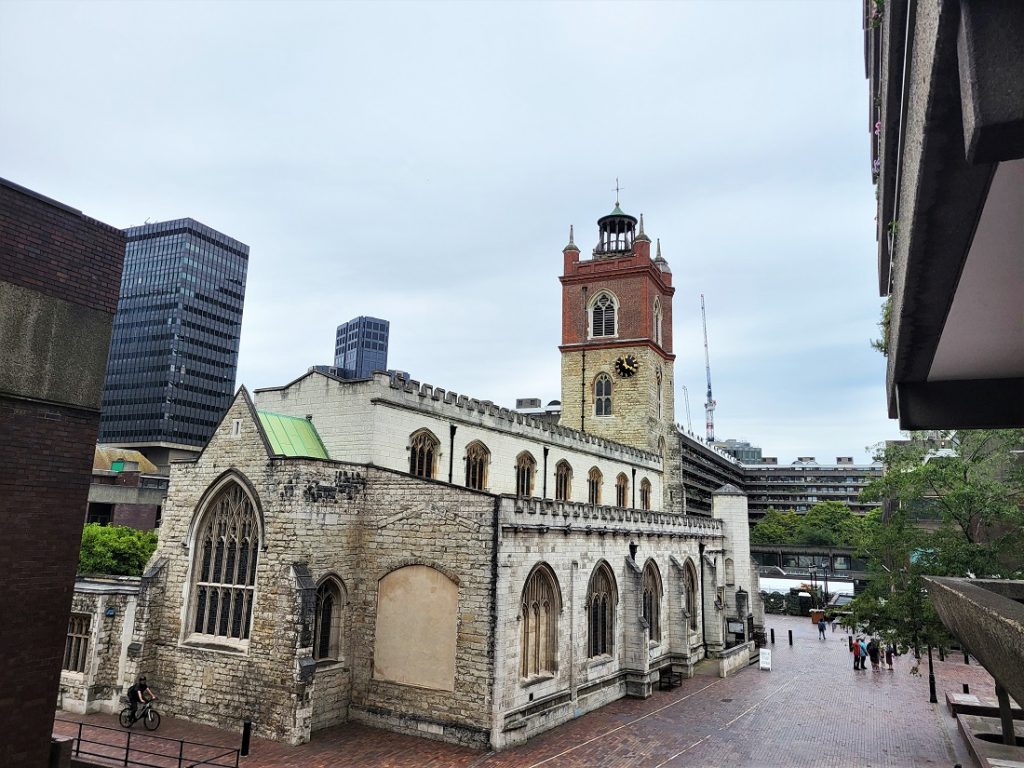
St Giles-without-Cripplegate Church lies opposite the Barbican centre, and after visiting the arts complex, we crossed the covered walkway over the lake to take a look at the small, medieval church.
St Giles’s was founded in 1090 by Alfune, Bishop of London, and as with many Norman churches, it’s had a fair bit of work done to it over the centuries.
It was rebuilt in 1394, the tower was added in 1682 and it was extensively renovated in 1966, which has resulted in a bit of a mish-mash of styles.
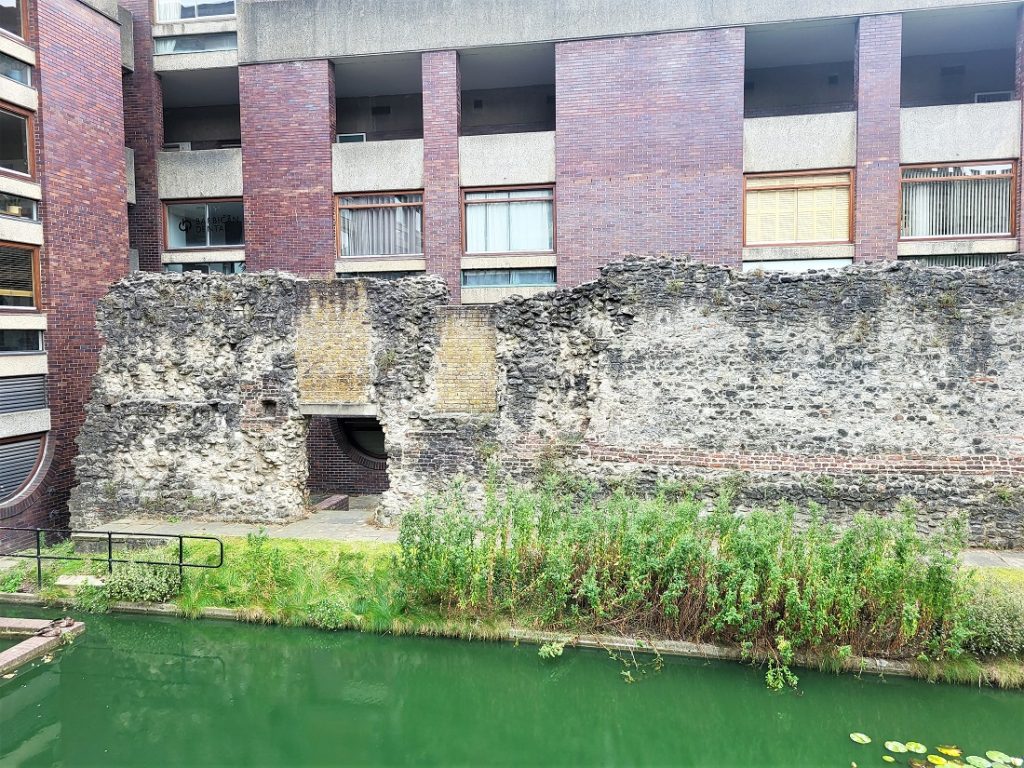
The church was dedicated to St Giles in the Middle Ages and given its unusual name because it lay just outside the walls to the City of London, next to one of the old gates, Cripplegate.
You can still see a small section of the old London wall, which dates back to 120AD, beside the church (above).
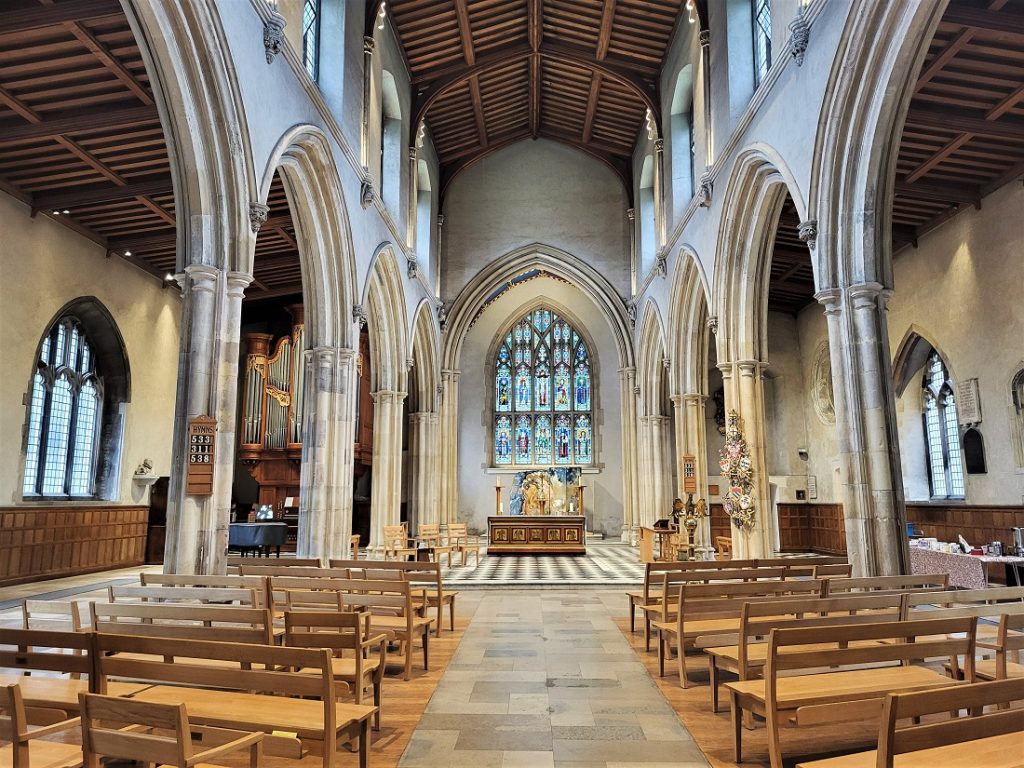
The church has quite the storied history. Oliver Cromwell, the former Lord Protector of England, married Elizabeth Bouchier at the church in 1620.
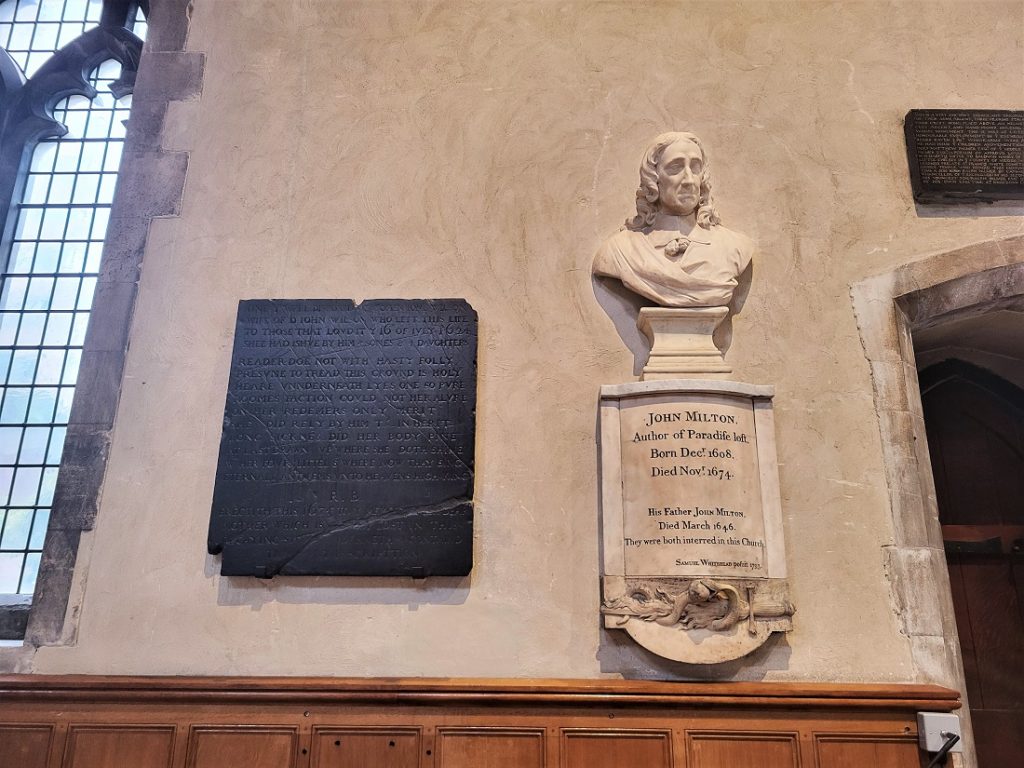
While the poet John Milton (he of Paradise Lost fame) and the Elizabethan explorer Sir Martin Frobisher were both buried at St Giles.
It’s a lovely little church, quite simple inside, and I was glad we’d taken the time to look around.
St Alphage Garden
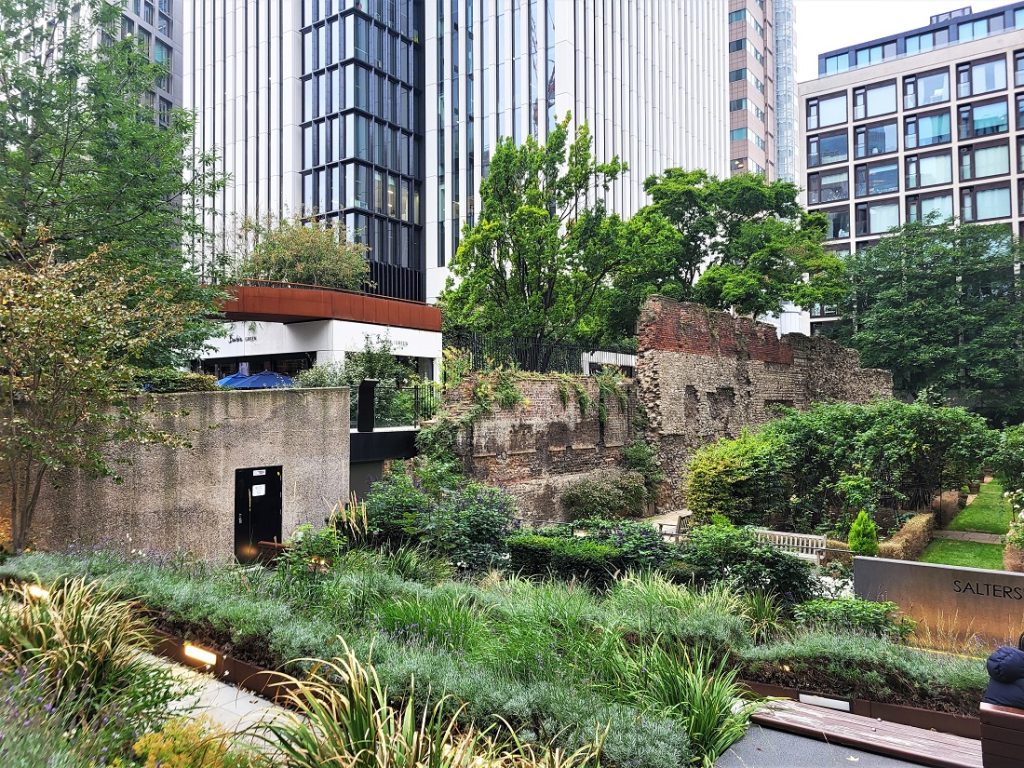
One of my favourite things about walking in London, and particularly the City of London, is you’re never quite sure what you’re going to find.
I’ve spent many a time ambling around the streets and unexpectedly discovered a fascinating building, excellent café or intriguing art installation, and this trip was no exception.
As we walked through the City of London, we came upon another section of the London wall at St Alphage Garden (above).
This tiny, tranquil garden, surrounded by the modern office blocks of the city, is so-called because it was once home to the 11th century St Alphage Church, which was built on part of the old Roman wall.
The church was knocked down in the 16th century and its ruins were turned into a garden in 1837.
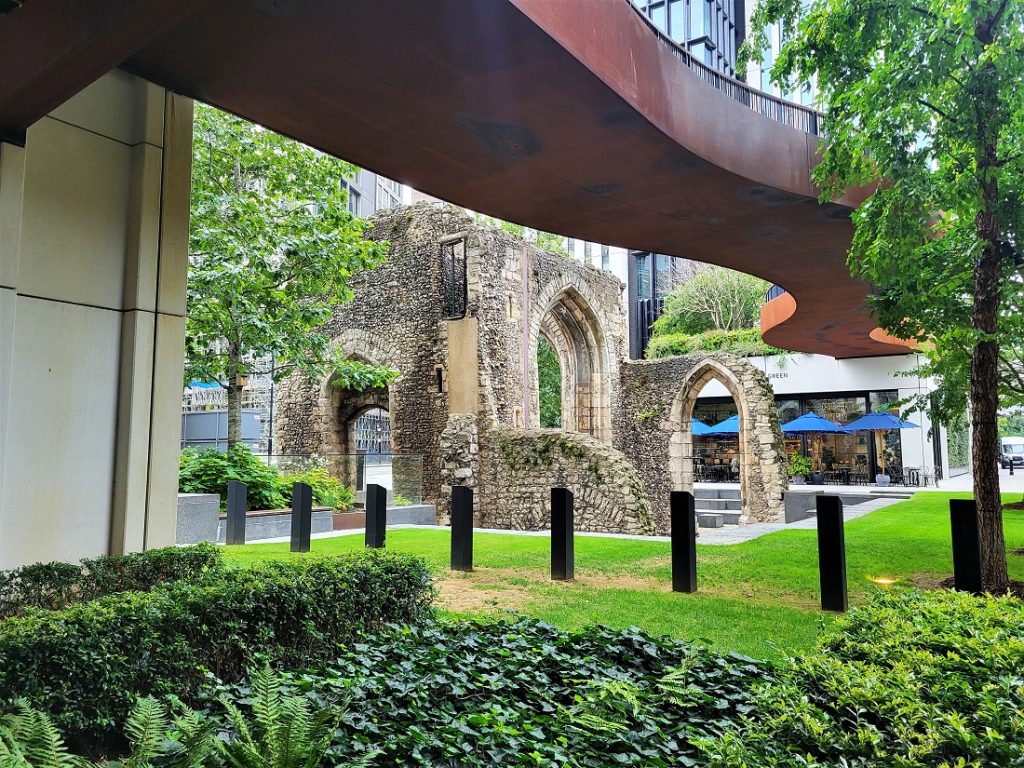
The site is also home to the remains of a second church, the catchily named Priory Church of the Nunnery of St Mary-within-Cripplegate (above), which became the local parish church after St Alphage closed.
St Mary’s nave was torn down in 1923 and its tower was destroyed in a fire in 1940, but a small section of it is still standing and there’s now a walkway overlooking it, which was built between 2018 and 2019.
It was really cool stumbling upon these ancient remnants of the old city and they were a great reminder of just how old and historic London is.
The National Portrait Gallery and Larry’s Bar
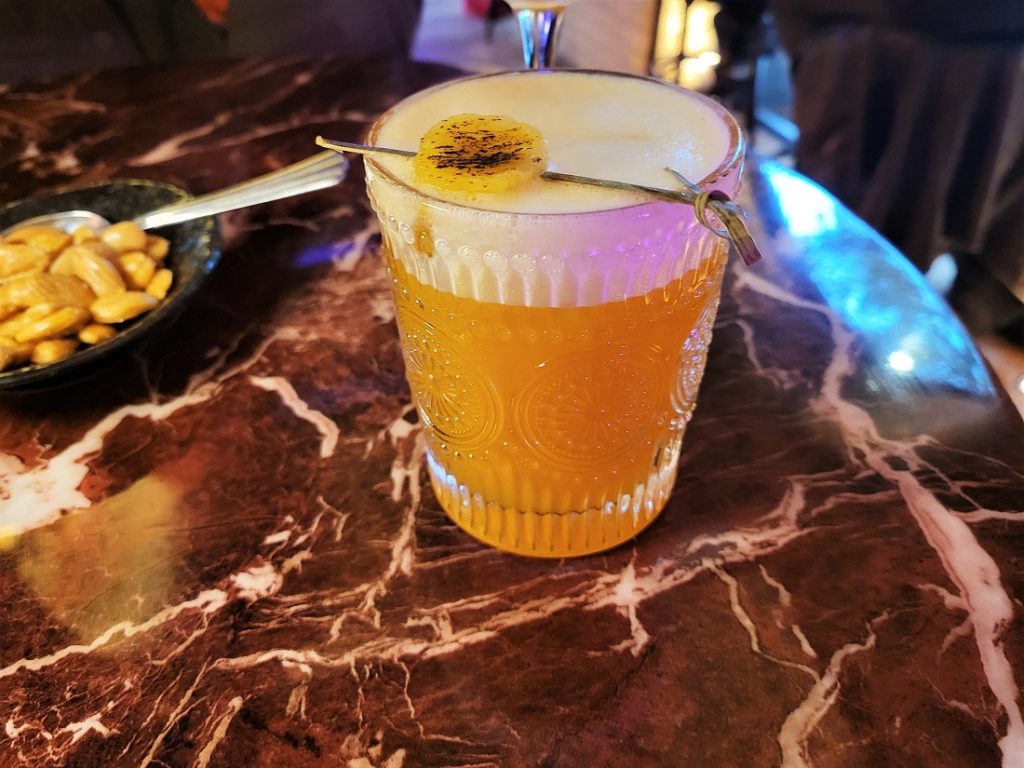
rom the City of London, we hopped on the tube to the National Portrait Gallery, as I was keen to check it out following its recent refurbishment.
I’m a history geek, so the National Portrait Gallery has long been my favourite London art museum, as I like being able to see so many portraits of the many men and women I recognise from my history books under one roof.
We went up to the second floor and made our way down through the gallery, stopping to admire the portraits that caught our eye.
I can’t say I loved the new layout. I much preferred the old version, which was easier to navigate, and I didn’t think the new design flowed as well.
It wasn’t clear where we were supposed to go and I think we missed part of the museum because of this.
What I did like about the new-look gallery was Larry’s Bar. Situated in the museum’s basement, the cool, relaxed, friendly jazz bar was the perfect place to end a fantastic day in the city.
My friend and I sat at our table, cocktail in hand, chatting away and listening to the live music, slowly unwinding after a busy, but enjoyable day exploring some of London’s more unusual sights.





